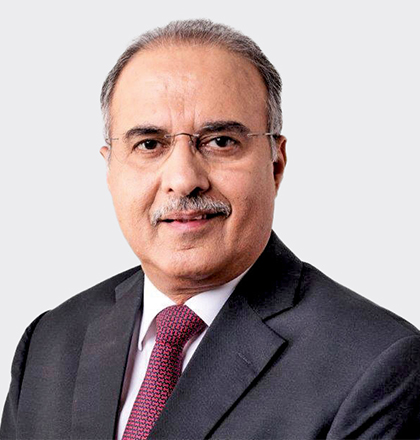Adani Group Highlights Sri Lanka’s Renewable Energy Potential and Economic Benefits
Summary
During a recent meeting with Sri Lankan journalists at the Adani Group’s global corporate headquarters, Anil Sardana, Managing Director of Adani Power Ltd, and Adani Energy Solutions Ltd, who is also heading the Adani Green Energy’s Sri Lanka project, highlighted […]

During a recent meeting with Sri Lankan journalists at the Adani Group’s global corporate headquarters, Anil Sardana, Managing Director of Adani Power Ltd, and Adani Energy Solutions Ltd, who is also heading the Adani Green Energy’s Sri Lanka project, highlighted Sri Lanka’s significant potential in renewable energy. Sardana, emphasized the country’s ability to harness solar, wind, and pumped hydro storage to deliver consistent, traceable green energy around the clock.
Sri Lanka has the resources to produce competitive green energy through its abundant solar, wind, and hydro capacities. Sardana shared that the country should also focus on creating and exporting byproducts like green hydrogen and green ammonia, which can generate surplus revenue and benefit the populace through royalties.
Adani has proposed to set up two wind power plants in Sri Lanka at Mannar and Pooneryn region. With a cumulative installed capacity of 484 MW and entailing an overall investment of over a billion dollars, this would be the country’s largest FDI. The company has got a cabinet approval for USC 8.25/ unit tariff for the project.
Sardana elaborated that the tariff Adani has offered to Sri Lanka is fixed for the entire duration of the contract, which is 20 years… Sardana emphasized the need for transparency in tariffs, pointing out that other power companies initially quoted lower prices but increased rates later, thereby burdening the consumers. “Transparency is key. If they charge a certain amount, that should be the bill. There should be no hidden elements. Should we offer a fixed tariff with no changes over the next 20 years, or should we present a seemingly lower figure that could potentially double through additional charges in the future? This dilemma demands clarity from Sri Lanka. Discerning individuals already know who can deliver and within what timeframe,” Sardana stated.
Sardana said that the company is committed to the Sri Lankan power sector and will employ atleast 95% of its workforce locally for both construction and operations & maintenance, contributing to skill and ecosystem development. It has also offered to aid the ancillary industries related to project commissioning so that in the future these skills could be sourced locally for future projects, instead of having to import them from outside.
Addressing environmental concerns which has been raised for the Adani project, Sardana explained that Adani’s windmills are equipped with AI-based radar systems to detect incoming bird flocks and stop the turbine, color-marked blades making them more visible for the birds, and noise boxes to prevent bird collisions.
He urged Sri Lanka to reconsider its reliance on expensive oil-based power generation and explore more cost-effective alternatives, such as establishing power transmission corridor with India for cheaper power. Sardana highlighted the success of an Adani project for Bangladesh, which initially faced similar negativity over fear of high tariff the company may charge, but now generates the cheapest power among imported power plants in the country.
ENDS